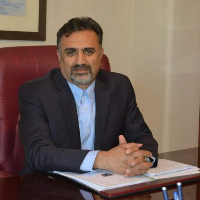Spatial analysis of the explanatory components of urban development in a socio-spatial dialectic: the right to the city from theory to practice the case study of Bandar Abbas city
The right to the city in urban development goes beyond the physical form and, at the same time, has a mental and social meaning, which has been popularized in planning theory and urban studies after its proposal by Lefebvre. This theory focuses on the residents and the distinctive features of the space and believes that the right to the city can only be formulated as the right to the evolved and renewed urban life. Based on descriptive-explanatory purpose, this research seeks to spatially analyze the components of right to the city in Bandar Abbas. Therefore, after collecting 77 subjective and objective measures around the research components, the multi-criteria decision-making technique of COPRAS has been exploited to integrate the data in the ArcMap Tools. The findings show that in the current state of urban development in Bandar Abbas, the right to the city in all its aspects, the right to ownership, the right to participation and the right to difference for the residents have been weakened and ignored. A share of up to 20.7% of the city space, which is mainly directed to the wealthy neighborhoods and parts of the central areas of the city, as well as parts of new developments, the right to the city has been more manifested, and in about 19.8% of the city spaces. Mainly applicable to informal settlements and slums of the city, this right has been undermined and ignored.
-
A Meta-Analysis on Urban Heat Island Studies in Iran
Hasan Masoudi, *, Safar Ghaedrahmati, Amirreza Khavarian-Garmsir
Town And Country Planning, -
Spatial Analysis of Housing Resilience Against Natural Hazards with an Emphasis on Earthquakes: A case study of Southern Regions of Tehran Metropolis
*, Amirhoseen Nematullah Zadeh Mahani
Geographical Planning of Space Quarterly Journal,



